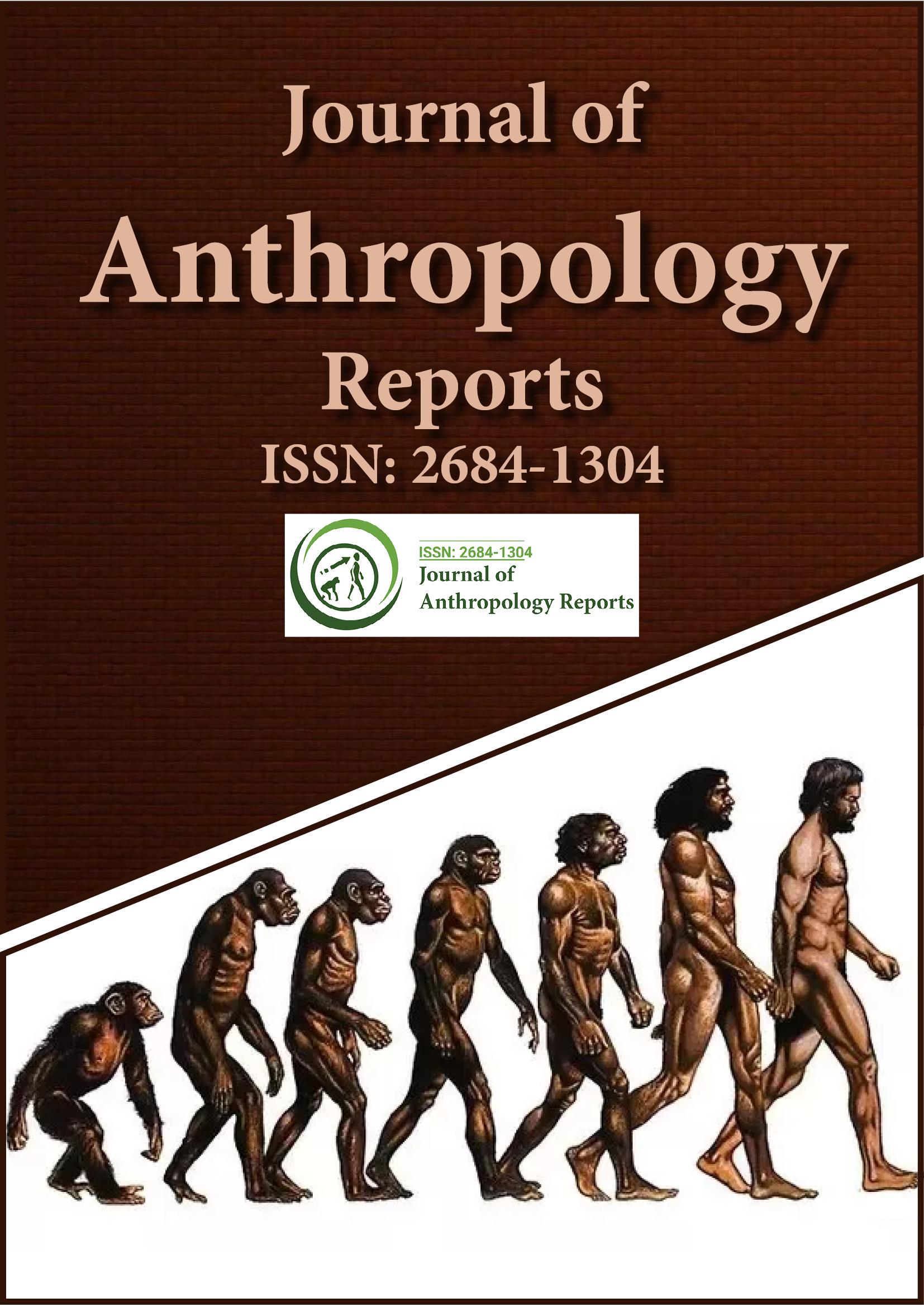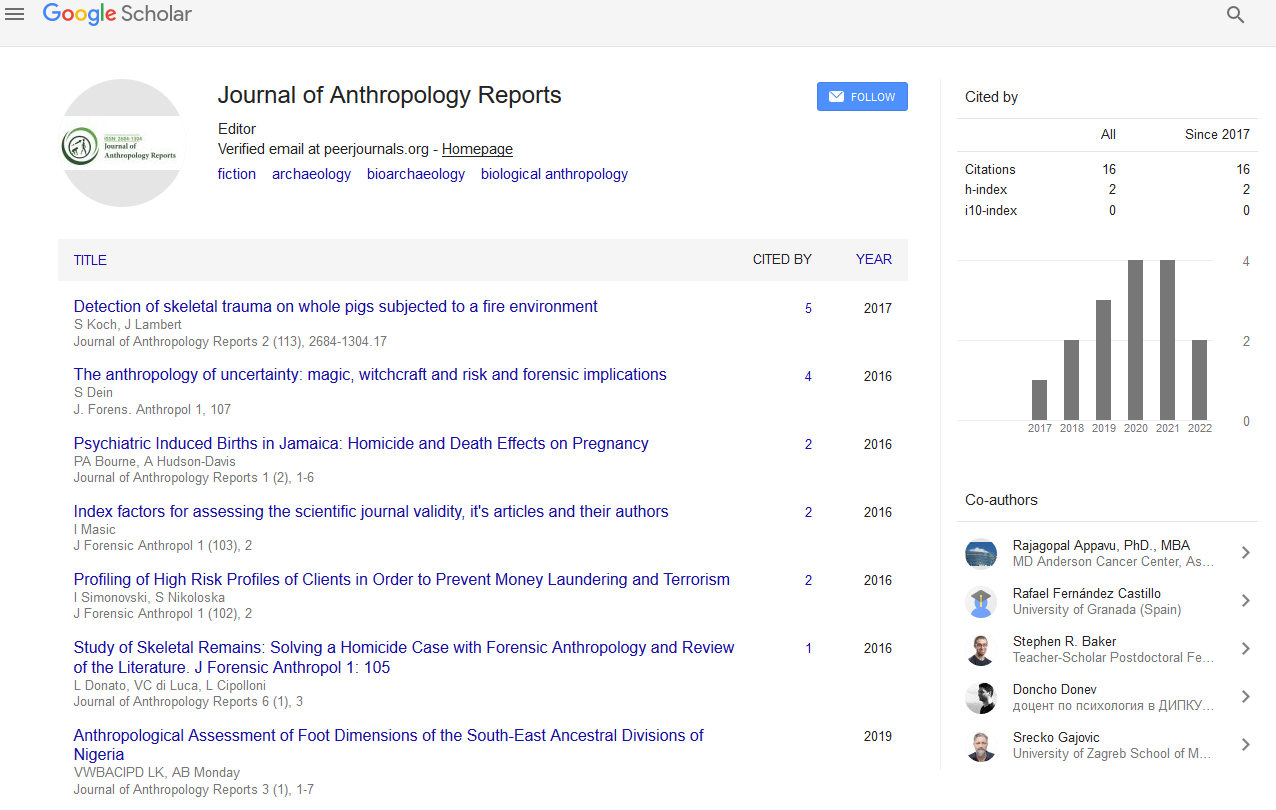Indexed In
- RefSeek
- Hamdard University
- EBSCO A-Z
Useful Links
Share This Page
Journal Flyer

Open Access Journals
- Agri and Aquaculture
- Biochemistry
- Bioinformatics & Systems Biology
- Business & Management
- Chemistry
- Clinical Sciences
- Engineering
- Food & Nutrition
- General Science
- Genetics & Molecular Biology
- Immunology & Microbiology
- Medical Sciences
- Neuroscience & Psychology
- Nursing & Health Care
- Pharmaceutical Sciences
Abstract
Anthropological Assessment of Foot Dimensions of the South-East Ancestral Divisions of Nigeria
Vidona WB* Anibeze CIP David LK and Monday AB
Background: Sex, age, stature, and ancestry are considered the pillars of identity and primary characteristics determined to establish the biological profile of an individual. Forensic podiatry being a novel research branch of anthropometry involving human identification of the foot through understanding and measurement of the morphological shapes and dimensions has great application for physical identity during calamity or disasters like plane crash, and earth quakes terror, crime scenes, demographic identity of determining individuals peculiar to a unique population when collating census data occasioned in times of controversies due the individuality and infinite morphological variation of the human foot. Aim: The aim of the study is to anthropologically assess the dimensions of foot of the stratified ancestral groups of South-east Nigerians with a view to identify the morphometric and morphological differences in the sub-groups. Methods: The research was carried on 1200 adult population comprising of 662 male and 572 female of age range from 21 to 70 year chosen randomly from South-east geopolitical zone of Nigeria in two geographical Ancestral division of the – Igbo-western ancestral tribe predominantly grouped as Akwa-Nsukka block; and the Igbo-eastern ancestral tribe predominantly grouped as Afikpo-Owerri block across inhabitants of selected rural communities of the region. Measurements of foot length (FL), foot breadth (FB) and toe length (TL) were done, while three parameters were calculated as: Foot Index calculated as Foot breadth/Foot lengthx100; Toe shape calculated as toe length/foot length x100; and Foot shape was determined by calculation of foot index as Slender type: FI*FI+SD (X+SD). Data analysis included descriptive and inferential statistics of mean and standard deviation. Also Anova-test was done to compare the foot size dimensions on the right and left side value. Confidence level was set at 95%, as p-values ≤ 0.005 were considered significant. Results: Result showed Sex differences to be highly significant (p0.05). Conclusion: Conclusively the study showed that foot parameters are morphometrically and morphologically sex and ethnic specific. This study confirms that correlation of the factors and parameters are better in young female Igbowestern than Igbo-eastern but better in male Igbo-eastern at all age groups.
Published Date: 2019-03-27; Received Date: 2019-02-28

